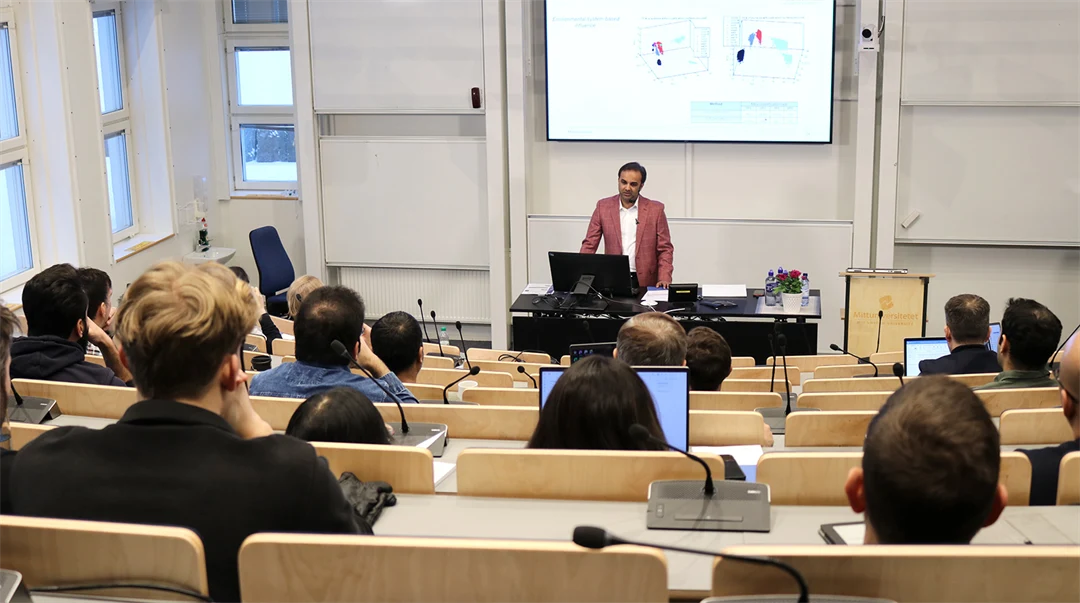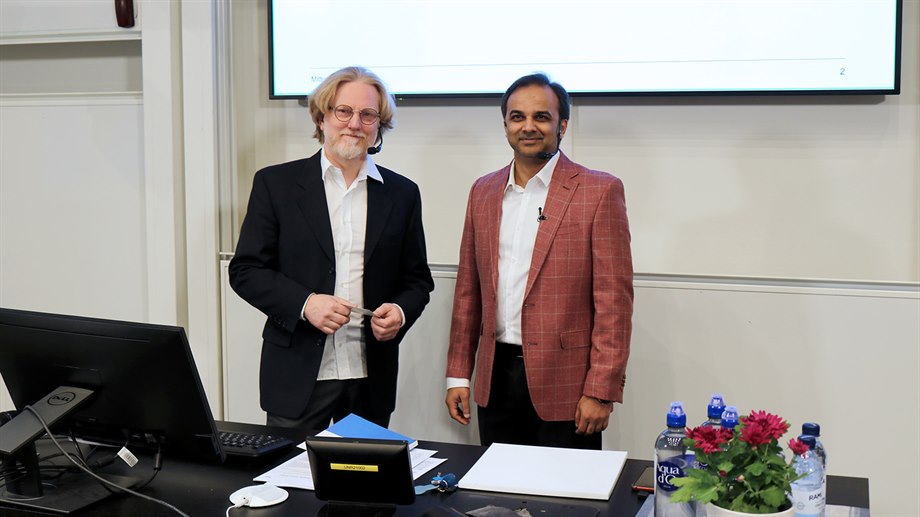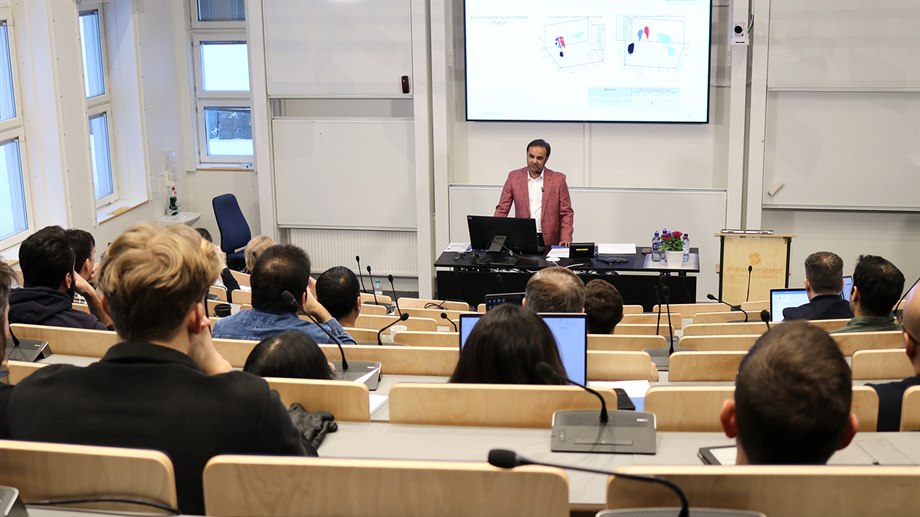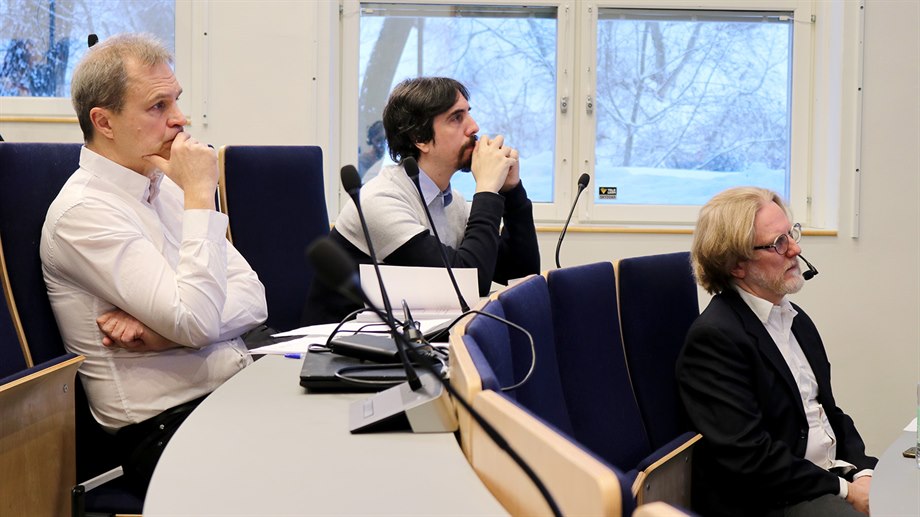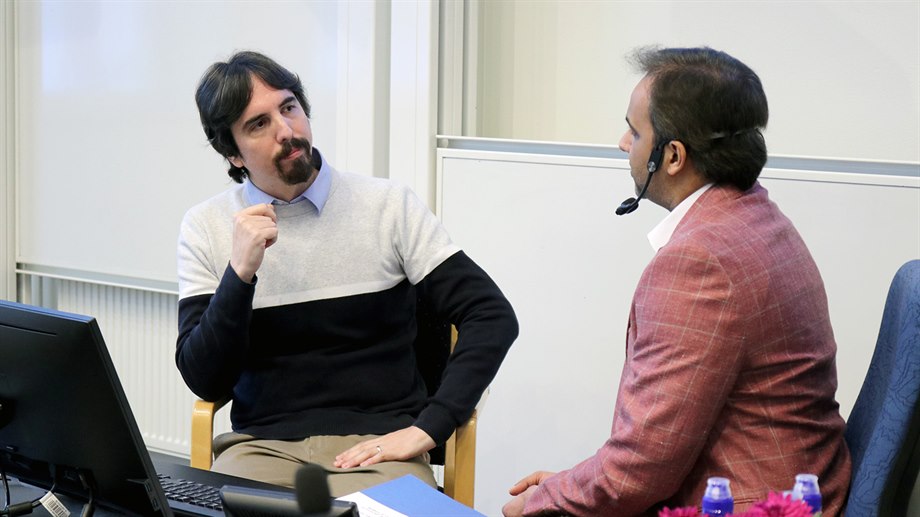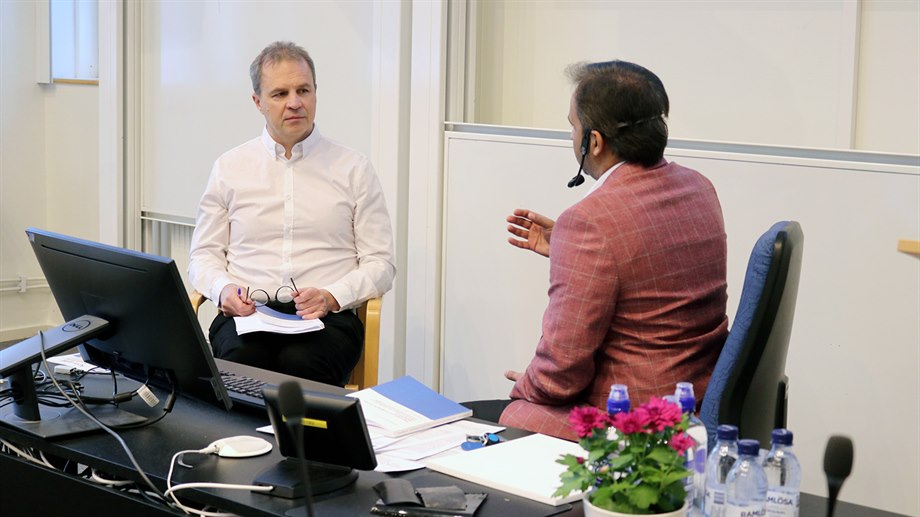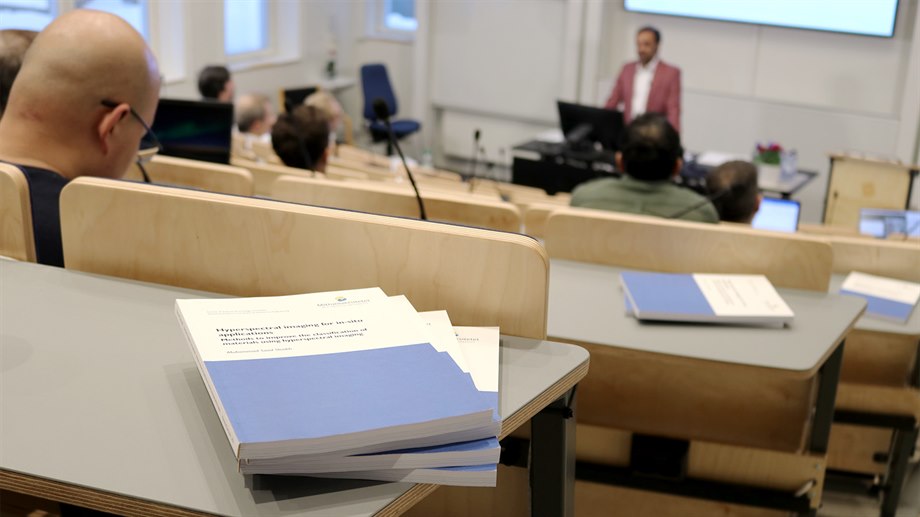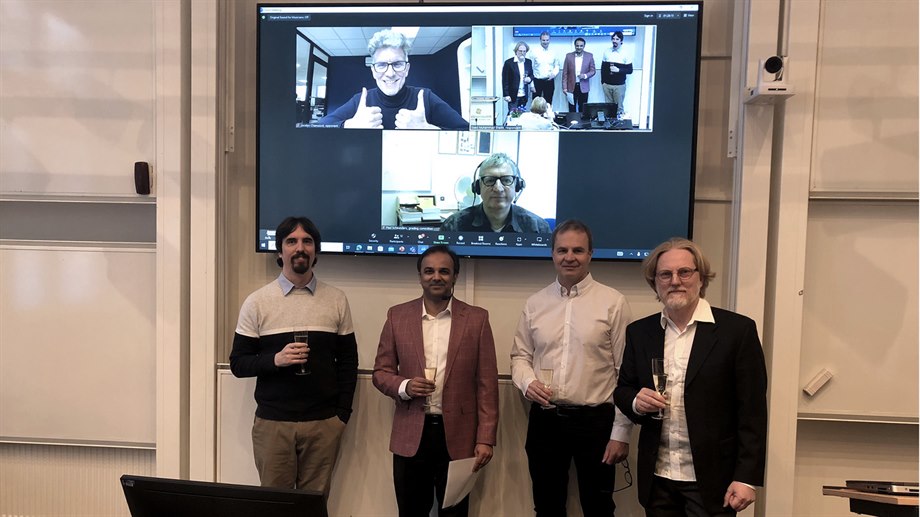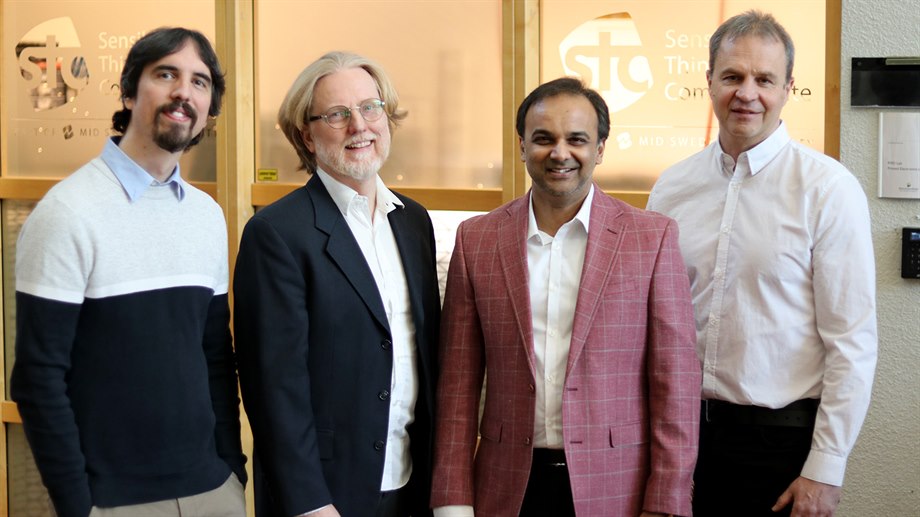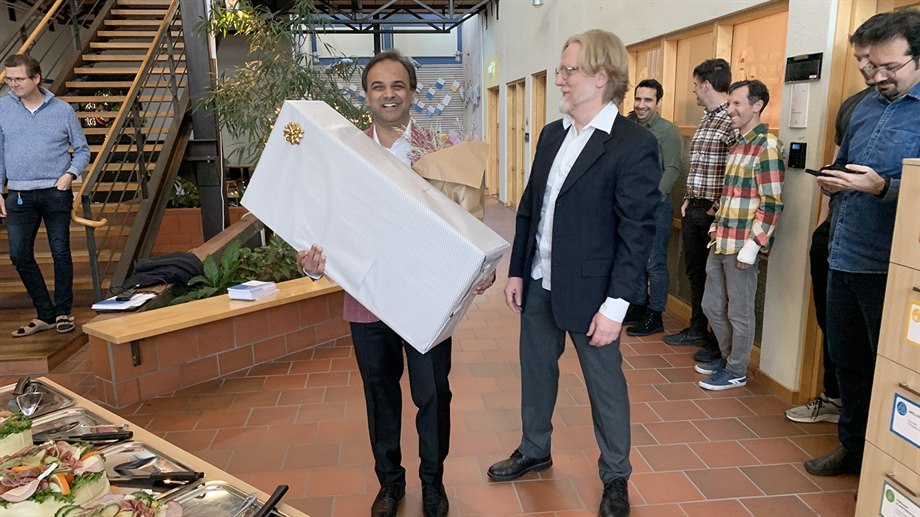av
Saad Muhammad Shaikh ‑ New PhD in Electronics
On Thursday, January 25, Saad Muhammad Shaikh successfully presented his thesis "Hyperspectral imaging for in-situ applications: Methods to improve the classification of materials using hyperspectral imaging". After the grading committee's deliberation, he can now title himself a Doctor in Electronics.
The defense began with a presentation of the thesis given by Saad Muhammad Shaikh himself. The presentation can be seen on Mid Sweden University's YouTube-channel. When the presentation was over, it was time for invited Prof. Jocelyn Chanussot, from the Grenoble Institute of Technology, to oppose the thesis.
After the opponent it was time for the grading committee to tak over and ask their questions to the respondent. In the grading committe Professor Paul Scheunders, University of Antwerp in Belgium, Dr. Jaime Zabalza, University of Strahclyde in Glasgow, UK and Associate Prof. Jonas Örtegren from Mid Sweden University.
After a short deliberation and with several nice words of wisdom about the work, the assessment board announced the gratifying decision to approve the thesis and Saad Muhammad Shaikh can now title himself a Doctor of Electronics.
About the thesis
In his thesis, Saad addresses several research questions related to in-situ hyperspectral imaging systems, proposes measurement methods for more accurate imaging, and examines the impact of the methods on material classification.
First, the thesis investigates the possibility of successfully calibrating a hyperspectral imaging system using a low-cost PTFE reference. A hyperspectral imaging system and practical calibration procedure using an inexpensive calibration reference are introduced. This reference enables accurate measurement of a material’s reflectance spectra independent of lighting and the camera’s spectral distribution of intensity and sensitivity. The study presents experiments conducted on winter roads covered with water, snow, and ice. The results show the robustness of the calibration and the suitability of the system for classifying materials.
The thesis further focuses on increasing the dynamic range (DR) of line scanning hyperspectral cameras. A method that relies on the use of multiple exposures is proposed to increase DR, benefiting applications such as plastic detection and polymer sorting. Experiments show that the proposed method can increase the DR for hyperspectral SWIR imaging from 43 dB to 73 dB. Material classification experiments reveal significant accuracy improvements with multiple exposures for large dynamic ranges.
The thesis also examines the effect of variations in relative humidity. It shows that even minor changes in humidity can significantly affect measurements. Frequent calibration and pruning of active wavelength bands are proposed as solutions to reduce the classification error rate for polymers from 20% to less than 1%.
The thesis also investigates the classification of colored materials by combining visible and infrared imaging. The classification algorithm shows high overall accuracy, close to 99.9% for one test case, which also shows the potential of this approach.
Finally, the use of infrared hyperspectral imaging combined with Convolutional Neural Networks (CNN) for the classification of black polymers is evaluated. CNN outperforms all traditional classification algorithms, further demonstrating the potential of the proposed method. Further research on larger and more diversified material samples is recommended.
